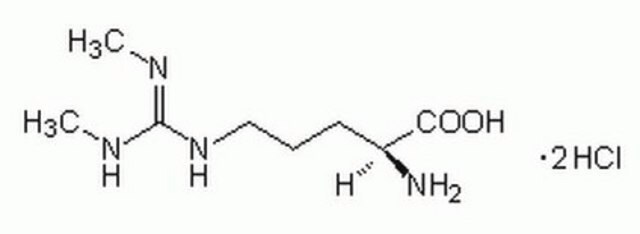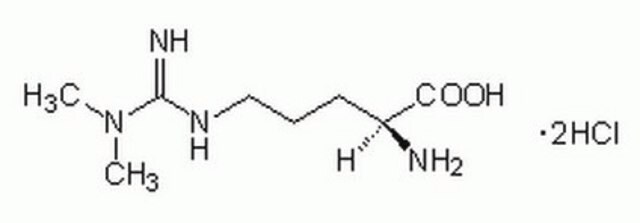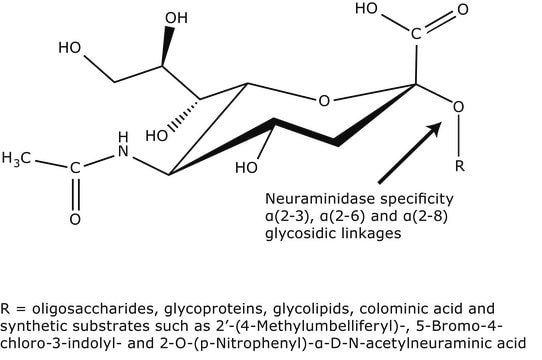推薦產品
品質等級
化驗
≥95% (HPLC)
形狀
powder
顏色
off-white
InChI
1S/C8H18N4O2/c1-12(2)8(10)11-5-3-4-6(9)7(13)14/h6H,3-5,9H2,1-2H3,(H2,10,11)(H,13,14)/t6-/m0/s1
InChI 密鑰
YDGMGEXADBMOMJ-LURJTMIESA-N
一般說明
Asymmetric dimethylarginine (ADMA) is a naturally occurring chemical found in blood plasma. It is a metabolic by-product of continual protein modification processes in the cytoplasm of all human cells. It is closely related to L-arginine, a conditionally-essential amino acid. ADMA interferes with L-arginine in the production of nitric oxide, a key chemical to endothelial and hence cardiovascular health. Asymmetric dimethylarginine is created in protein methylation, a common mechanism of post-translational protein modification. This reaction is catalyzed by an enzyme set called S-adenosylmethionine protein N-methyltransferases (protein methylases I and II). The methyl groups transferred to create ADMA are derived from the methyl group donor S-adenosylmethionine, an intermediate in the metabolism of homocysteine. (Homocysteine is an important blood chemical, because it is also a marker of cardiovascular disease). After synthesis, ADMA migrates into the extracellular space and then into blood plasma.
Asymmetric dimethylarginine (ADMA) is a non-proteinogenic L-alpha-amino acid, that belongs to the guanidines and serves as a derivative of L-arginine. This dimethylarginine functions as an endogenous inhibitor of nitric oxide synthase (NOS) and acts as a biomarker for endothelial dysfunction in various pathological states.
應用
Asymmetric dimethylarginine is a versatile compound that finds application in biochemical and metabolomics research.
特點和優勢
- Ideal for biochemical and metabolomics studies
- High purity product for research applications
其他說明
For additional information on our range of Biochemicals, please complete this form.
儲存類別代碼
11 - Combustible Solids
水污染物質分類(WGK)
WGK 3
閃點(°F)
Not applicable
閃點(°C)
Not applicable
我們的科學家團隊在所有研究領域都有豐富的經驗,包括生命科學、材料科學、化學合成、色譜、分析等.
聯絡技術服務






